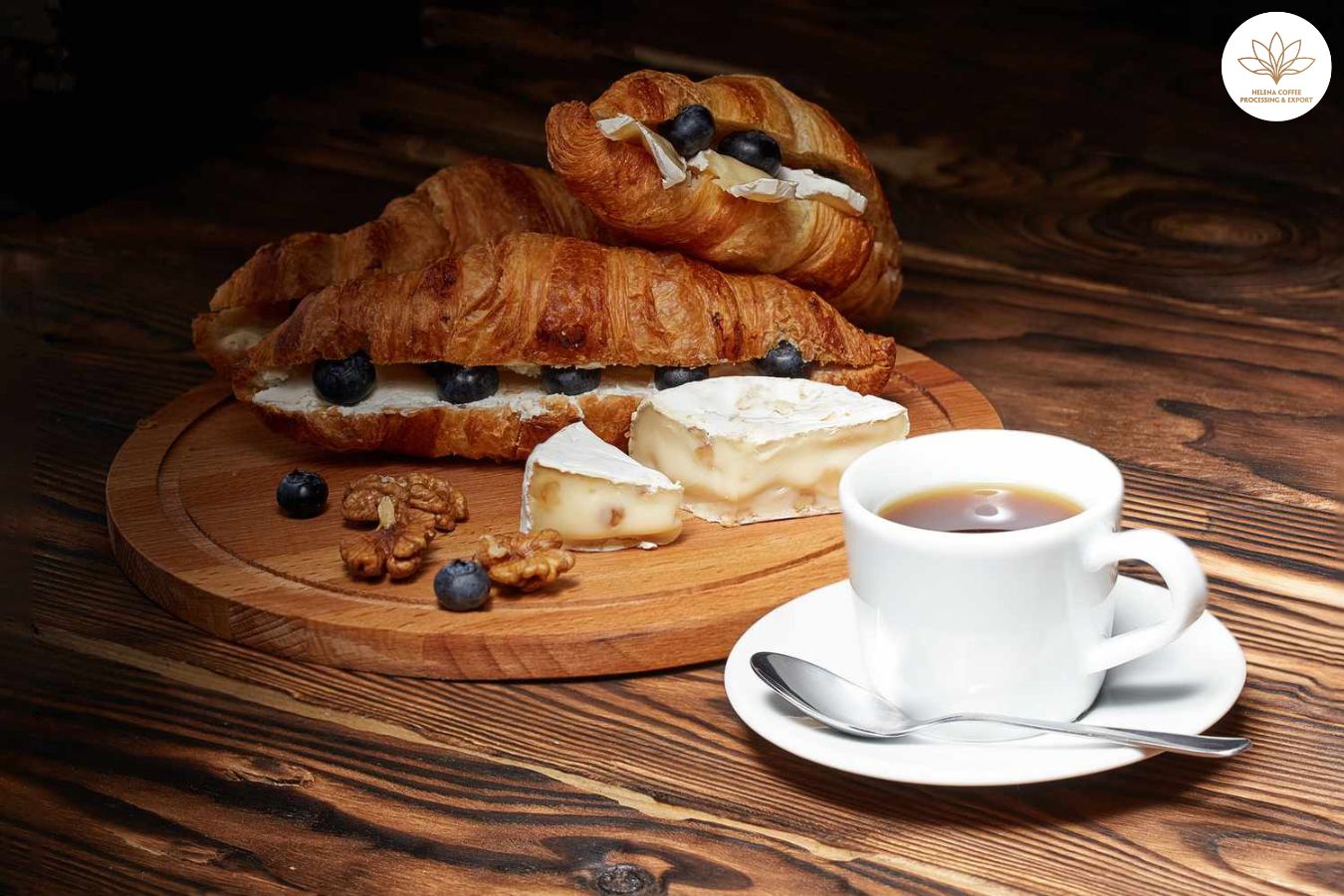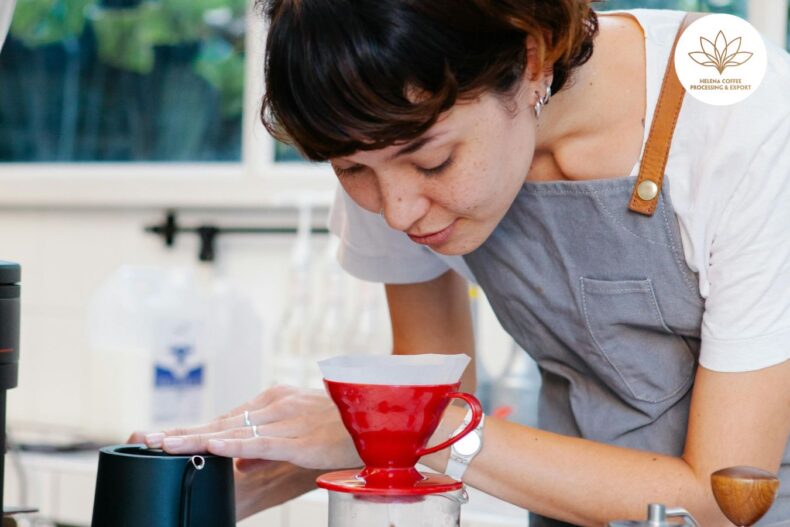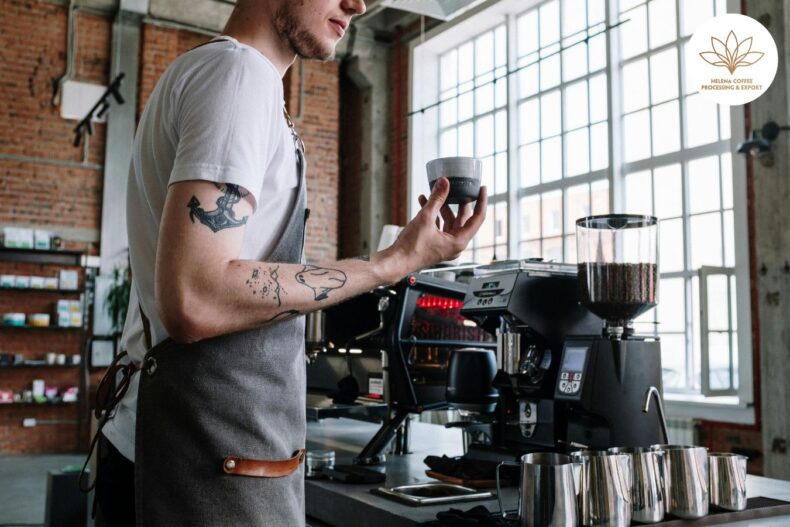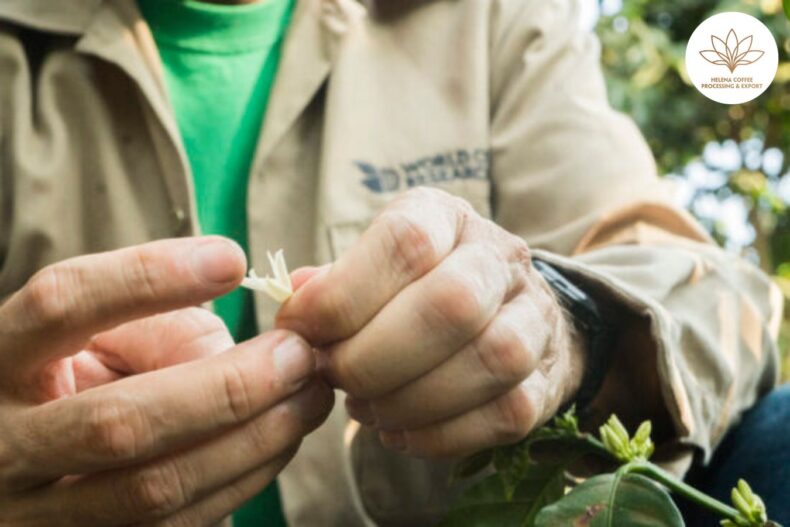
Pairing Specialty Coffee and Cheese: Cakes, pies, cookies, chocolates, and ice cream – these sweet treats are savored by people worldwide as accompaniments to a cup of coffee. The sugary notes of these confections often harmonize beautifully with the rich tones of coffee, whether it’s served black or with a splash of milk.
Yet, there’s an emerging trend that leans towards the savory side, pairing coffee with an array of breads and even cuts of meat. But let’s turn our attention to a less traditional pairing: cheese.
It might strike some as unorthodox, but cheese shares several flavor profiles and even textural elements with coffee. This unexpected similarity has sparked a curiosity in some regions to experiment with various cheese pairings alongside specific coffee varieties.
To delve deeper into this gastronomic exploration, I engaged in conversation with two esteemed cheesemongers. Continue reading to uncover their valuable insights on how coffee and cheese can be mutually enhanced.
How Do Coffee and Cheese Share Common Ground?
The marketplace for premium cheeses, often referred to as fine, gourmet, or specialty cheeses, is flourishing, much like the market for specialty coffee. While there’s no strict definition or classification system in place, there are notable parallels between the two:
- Both are artisanal, high-quality products.
- They stand apart from their mass-produced, commodity counterparts.
- The provenance of the cheese can often be pinpointed to a specific cheesemonger or farm in a distinct locale.
- The production methods are key to the unique flavors and textures they offer.
Bruno Cabral, a cheesemonger at La Caseïna in Barcelona, Spain, remarks on the complexity of both coffee and cheese.

“Both cheese and coffee possess profound complexities,” he observes. “With cheese, the flavors and textures vary based on the milk types and maturity stages, whereas coffee’s flavor is influenced by the terroir it’s grown in.
“These are both ancient, natural products,” he continues. “You start with simple raw materials which are then transformed into something entirely different and more complex.”
Andy Swinscoe, the award-winning proprietor of The Courtyard Dairy in Lancashire, UK, cautions that pairing coffee with cheese is an art that requires finesse.
“When it comes to combining cheeses with coffee, precision is key,” he notes. “An exceptional coffee or cheese could easily be overshadowed or its flavors might conflict if the pairing is not well-considered.”
Exploring the Fusion of Cheese and Coffee in Beverages and Beyond
Innovative and traditional approaches to combining cheese with coffee are creating new sensory experiences around the globe. In the West, particularly in North America and the UK, butter or ‘Bulletproof’ coffee has found a following. Meanwhile, in the Nordic regions, the concept of ‘kaffeost,’ or coffee cheese, is a time-honored tradition.
Kaffeost involves placing chunks of leipäjuusto (a Finnish squeaky cheese often called ‘bread cheese’) into a steaming cup of filter coffee. The cheese softens slightly, soaking up the coffee’s rich aromas, while simultaneously imparting its own buttery, nutty essence into the brew.
In Colombia, café con queso offers a similar delight, using a cheese with a texture reminiscent of mozzarella. As it gently melts, it releases a luscious creaminess into the coffee, with some choosing to enjoy the infused cheese on its own or accompanied by bread.
The trend of topping coffee and tea with cheese foam has swept across Asia in recent years. This frothy addition, sweetened and made from cream cheese, whipping cream, milk, and sugar, adds a luxurious sweetness to the beverage.
Taking a more avant-garde approach, some have started grating Parmesan cheese over coffee cocktails, like the espresso martini, introducing a savory umami kick.
The convergence of the coffee and cheese industries has even led to the creation of coffee-infused cheeses. A notable example is the 2016 collaboration between Danish roaster Coffee Collective and cheesemaker Mads Østergaard Clausen from Arla Unika. They crafted a Swedish Prästost and a Dutch Gouda-style cheese using coffee. In their process, they infused 250 liters of filter coffee from Finca Vista Hermosa in Guatemala into 2,500 liters of fresh organic milk. With eight months of aging, the cheese matured to reveal a distinctive coffee flavor, showcasing the innovative potential of this unique pairing.
Deciphering the Complex Flavors of Coffee and Cheese
Cheese and coffee may not be the most traditional of pairings, yet they have more in common than one might expect, particularly in their flavor and textural profiles.
In the realm of coffee tasting, experts consider five principal components of the sensory experience: acidity, sweetness, bitterness, body, and aftertaste. Beyond these, coffee aficionados delve into distinct tasting notes to describe the beverage’s nuanced flavors.
Professionals in the coffee industry often refer to tools like the Specialty Coffee Association’s Coffee Taster’s Flavor Wheel and the World Coffee Research’s Sensory Lexicon to pinpoint the flavors and aromas present in a cup of joe. The Flavor Wheel encompasses various categories, such as fruity, floral, sweet, spicy, green/vegetative, and sour/fermented, each breaking down into further subcategories. For instance, within the fruity section, you’ll find divisions for stone fruits, with more specific notes like peach and plum.

Similarly, cheese experts employ comparable methods to evaluate the subtleties of cheese, using tools like the Academy Cheese Tasting Wheel and the Academy of Cheese’s Structured Approach to Tasting (SAT) framework.
“Though not traditionally coupled, coffee and cheese share overlapping flavor notes,” Andy explains. “This includes bitterness, sweetness, and caramel nuances.
“Given cheese’s vast spectrum of textures, strengths, and tastes, it has the potential to complement a wide array of beverages,” he continues.
The Academy Cheese Tasting Wheel mirrors the structure of the SCA’s Coffee Taster’s Flavor Wheel to some extent, organizing cheese flavors into five principal categories: sweet, salty, acid, bitter, and savory. Each of these branches into numerous subcategories, such as the sweet division, which itself includes fruit sugars and vegetable sugars, further detailed with flavors like berry, tropical fruit, malt, and nut.
Crafting the Perfect Coffee and Cheese Pairings
Andy advises that to fully appreciate the intricate flavors and aromas, one should allow the cheese to warm to room temperature before pairing it with coffee.
It’s equally vital for the coffee to be served at a pleasant sipping temperature, not too hot, or even as a cold brew, according to Bruno.
“In matching coffee with cheese, identifying complementary or contrasting flavor profiles, such as the interplay between sweet and salty, can serve as an excellent foundation,” Bruno suggests.
“Begin with a visual inspection, noting the hue of the coffee. With cheese, engage your senses by touching and smelling it,” he instructs. “Next, taste each separately before combining them – introduce the cheese to your palate followed by a few sips of coffee.”
Andy stresses the importance of tasting the cheese prior to the coffee to ensure that the cheese’s flavors and nuances are perceived first.
“Slice your cheese into small, fine pieces, tasting them both before and after you sip your coffee, allowing the cheese’s own flavor and finish to shine,” he elaborates.
Andy goes on to explain that the method of brewing coffee is a crucial consideration when selecting a cheese pairing.
“The choice of preparation – be it espresso, milk-based coffee, or filter – significantly influences the prominence of the coffee’s flavor when paired with cheese,” he notes. “This, in turn, guides which cheese might pair best.”
The texture and lingering taste of cheese are also key factors in finding the perfect pairing.
“Fats in cheese create a complex taste sensation, often leaving a prolonged aftertaste, allowing the flavors to resonate,” Bruno describes.
He cites the harmonious pairing of Queijo Minas Artesanal do Cerrado, a cheese from Brazil’s Cerrado Mineiro region, with a natural Brazilian coffee, highlighting the exquisite balance between the coffee’s sweetness and acidity against the cheese’s saltiness.
Andy expands on other coffee-cheese pairings, emphasizing that “the robust bitterness and rich flavor profile of medium and dark roasts complement the boldness of blue cheeses, as well as nutty, sweet cheeses like Parmesan, Gruyère, and Lincolnshire Poacher. Conversely, milky coffees with creamy textures and notes of caramel and fruit pair delightfully with the likes of Gouda and Vintage Red Leicester.”
Maximizing Flavor Harmonies in Coffee and Cheese Pairings
Bruno offers several strategies for successfully pairing coffee with cheese.
“One approach is to pair coffees and cheeses that share a common origin or have similar terroir,” he suggests. “However, it’s advisable to steer clear of combining medium-roasted coffees with overly potent cheeses. Similarly, coffees with subtle flavor profiles tend to match well with semi-cured or softer cheeses.”
Andy emphasizes the importance of considering the acidity levels in your pairing choices.
“Goat cheeses that have undergone lactic fermentation, known for their pronounced acidity, can pose a challenge when paired with coffee,” he notes. “Yet, they can be harmoniously matched with coffees that are equally high in acidity.
“For matured cheeses, like blue varieties that carry a hint of spice, opt for medium to dark roasts that offer a fuller body and a counterbalancing sweetness,” Andy continues.
In the end, Bruno believes that the journey of pairing should be as delightful as the destination.
“Embrace the learning process, don’t shy away from experimentation, and if a pairing doesn’t work out, simply try again,” he encourages.
While cheese and coffee might not traditionally top the list of common pairings, the potential for a symbiotic relationship between the two is evident when the right selections are made.
The key lies in the thoughtful pairing of specific cheeses with particular coffee profiles. Through mindful experimentation and exploration of various cheese types, one might just discover a unique and captivating taste experience that transcends the ordinary.
FAQS:


